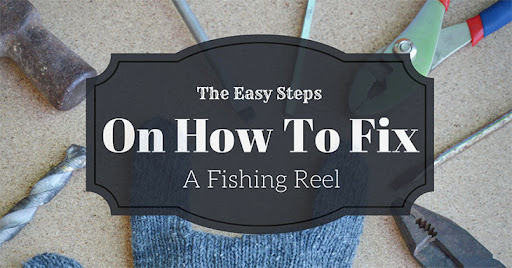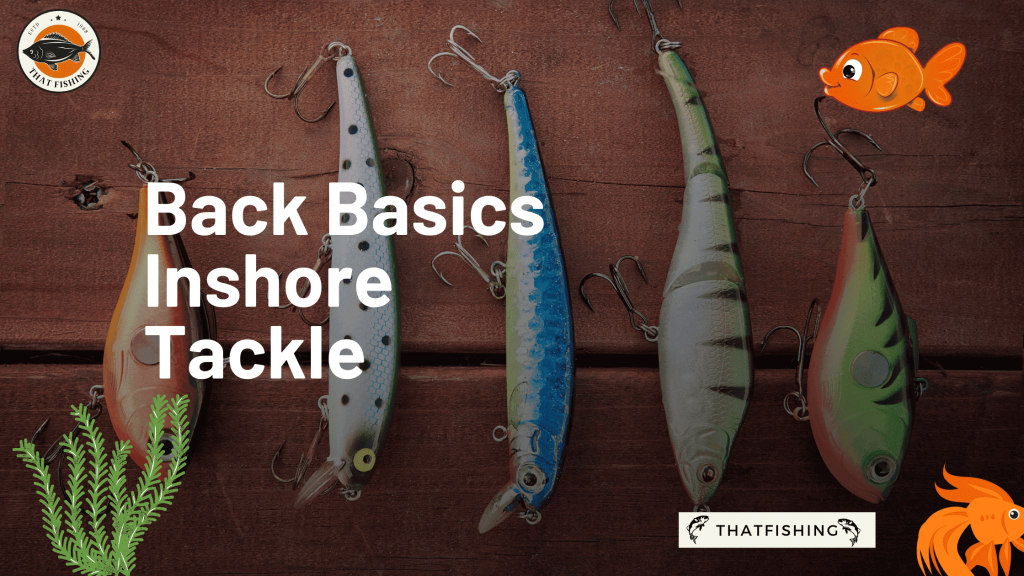Learning the skill of how to fix a fishing reel will give you peace of mind when casting, especially when this device fails to serve its function.
Experienced fish catchers are not immune from encountering problems with their fishing tackles like twisted lines, broken rods and snagging lures. However, one of the worst yet inevitable problems that you can come across as an angler is worn-out fishing reels.
Now, I know what’s on your mind. You may think you are not skilled enough to fix any device. Do not worry. I thought of that ahead of time, so that is what I want to help you within this tutorial. Just prepare the materials that I will mention, and follow the steps that I will introduce, then be surprised to realize that it is not that hard after all.
The Easy Steps On How To Fix A Fishing Reel
How To Fix A Fishing Reel: Materials needed
- Water
- Clean Cloth
- Lubricants And Cleaners
- Screwdrivers
- Wrenches
- Tweezers
- Cotton Swabs
- Toothbrush
How To Fix A Fishing Reel: Step By Step Procedure
- Disassemble The Reel
- Mark Each Disassembled Part
- Know Which Parts Wear Out, And Replace Them
- Apply Grease
- Assemble The Parts
- Change The Leader
Materials needed
Here we have listed the materials that you will need:
1. Water
You can use your garden hose to rinse off the salt debris that your reel gets after a day’s fishing. You can also soak them in a pail of water. For the internal parts, water helps in removing dirt and grime.
2. Clean Cloth
You can use cotton or any fabric that is soft and absorbent enough. This cleaner is essential because it will eliminate excess water before you apply the lubricant.
Many instructions about cleaning fishing reels tend to overlook this material. I want to give enough emphasis to its importance in this article. When excess water mixes with oil or lubricant, it ruins the reel’s overall performance.
3. Lubricants And Cleaners
Many types of these products are also available now in the market such as Simple Green cleaning compound and Ronsonol lighter fluid. The one I use is Penn Rod and Reel Cleaner, but any product that will help eliminate contaminated oil/grease will work. I also use Penn Angler Pack which has precision reel grease and synthetic reel oil.
4. Screwdrivers
The widely-used types are Phillips and flathead screwdrivers. It is important to check the construction and materials your fishing reel manufacturers use, and identify which type of screwdriver you will use to assemble and disassemble your fishing tackle.
It is also better if you prepare different-sized screwdrivers since different manufacturers make use of various size screws too.
5. Wrenches
You will use this equipment when loosening up nuts. You can use any wrench that you have on hand as long as it matches the size of your reel’s nuts. I prefer the 8-in-1 Reel Handle wrench, which features the eight popular sizes for handling nuts, and it fits all the handle nuts I have for all of my fishing reels which include Abu, Daiwa, Penn, and Shimano.
6. Tweezers
This tool will be helpful in grabbing and taking care of small parts such as wire clips and reel springs as this will ensure that they fit correctly and do not fly around. You need not be very particular with the pair of tweezers when cleaning the reel. The one I use is eyebrow tweezers, and it works well.
7. Cotton Swabs
These materials will aid you in applying the grease as well as for cleaning the tight areas of the reel.
8. Toothbrush
This tool is useful for removing stubborn grime and wiping down hard-to-reach areas of the fishing reel.
Step By Step Procedure
Here is the step-by-step procedure: Let’s go through it
1. Disassemble The Reel
This part seems to be scary. My goal is to lessen your fear of doing this after going through this article. Different brands of reels have different parts, so it is better to consult your owner’s manual, especially if you are going to do this for the first time.
Meanwhile, almost all fishing reels have reel handles, drag, and spools. In taking each piece of the materials apart, there is a chance that you forget where certain parts came.
To prevent this, you can arrange the reel’s components from the first thing you remove down to the last. Lay the pieces on a floor or mat. Put the materials in a line. This tip is for reference so that you will not find it difficult to arrange them again afterwards.
2. Mark Each Disassembled Part
Please be cautious with the screws; these might be tiny things that may cause a big hassle when you forget where they came. They also have various sizes, so they might puzzle you when you do not remember where you unscrew each piece. It is better to number them as well.
3. Know Which Parts Wear Out, And Replace Them
When you disassemble the parts, you will discover which parts are the reasons why your reel is not working well.
Most fishing reels nowadays consist of the best and most durable materials. Based on my experience, the most common parts which I have to replace are the plastic parts. First and foremost are the plastic pinion yokes. Clutch cam and brake shoes are also some of these.
The next things I check are the drag washers as well as the line guide. If you frequently fish (or even if occasionally), it is better to have stock of these materials because you do not know when your reel will encounter a problem. All other components are pure metals, and it takes time before these parts wear out.
4. Apply Grease
In this part, I would like to discuss how to clean a fishing reel which includes the use of lubricants, one type of which is grease. Use a toothbrush and any biodegradable product like a cotton swab or soft brush to avoid damaging the fibre and plastic components of the reel.
When applying the grease, make sure that you put it under the teeth of the gears, as putting it on top of the teeth can cause it to scatter. In cleaning the bearings, use a lighter fluid or a cleaner. Give them a spin to know if they are clean.
Remember to use cloth in cleaning the internal parts of the reel before you apply the lubricant to ensure that the grease does not mix with excess water, if there is any.
Warning: Be extra cautious when using oils and lubricants. Avoid extended breathing or contact with these substances, and prevent contact with eyes. Use these materials in a place where there is proper ventilation and far from anything that can cause a flame.
5. Assemble The Parts
To efficiently reassemble the components, you can refer to step 1. Follow the sequence of numbers on the masking tape which we discussed in the initial step, and do it in reverse order.
Know and use the proper tool to handle each part of the reel. Use the wedge when loosening up nuts and tweezers when handling wire clips and springs. For easier loosening up and putting back of screws, some use impact drivers. I prefer using traditional screwdrivers.
6. Change The Leader
Now, let me highlight the process of how to change a fishing line. This step is just next to reassembling the reel and the last step for this tutorial because it involves spinning the bail for loading the spool, which you can not do unless all parts are put back together.
After you remove the old worn line from your reel and replace it with a new one with a similar amount, let the line pass through the eyes of the guides on the rod. Make sure that you do not fail to include any guide.
After you open the bail of the reel, attach the new line. Close the bail. Lay the spool down and start spinning the bail. Avoid overfilling and underfilling. Loading the reel until it is .125 inches from the rim is ideal.
Related Reads :
- Learn How to Catch Grass Carp
- Top picks for braided fishing lines
- Affordable spinning reels under $100
Conclusion
I hope that through this article, I was able to give you an idea about the things you need to do when unexpected problems happen with your best friend in fishing.
All these steps I presented will not only help you how to fix a fishing reel. It will also save you money should the reel have to be sent for repair. Surely, thorough cleaning and maintenance will extend both your fishing reel’s life and the pleasure you get from angling.
FAQs
When used for casting, fishing reel bearings typically don’t need much oil. Depending on the setting they use in, trolling reel bearings can need a heavier lubrication.
The exterior Part of the reel should be cleaned with a moist microfiber cloth after each fishing trip, and you may want to add a thin coat of lubricant and protectant as well.
Wash your reel LIGHTLY with warm, soapy water after each usage in freshwater or saltwater. The fishing line will benefit from this as well. Rinse thoroughly at very low pressure with fresh water.



